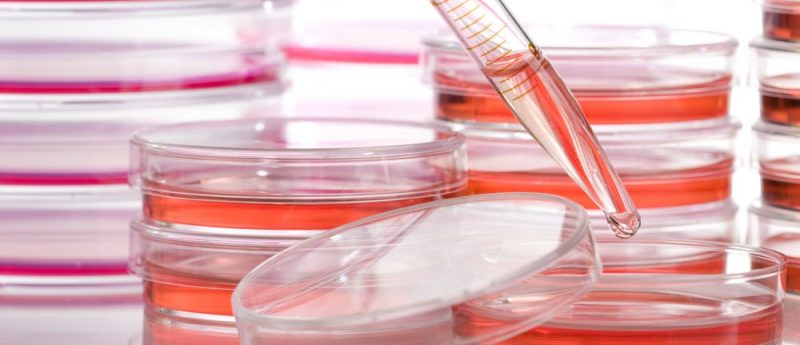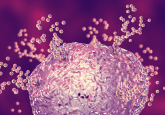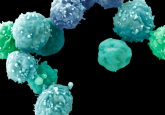Organoids: ask the experts

In this ‘Ask the Experts’ feature, part of our spotlight on organoids, a panel of international experts share their perspective on current obstacles and future developments.
How close are we to existing engineered models replacing in vivo models? What more is required to get there?
Dik van Gent (DvG): I think I see three major areas where we still need to improve the systems. One of them is to prolong tissue growth. The challenge is that if we keep the growth of cells constant, as soon as the tissue expands we have a problem. There is no blood supply so the thicker your tissue is, the less well nutrients can penetrate the middle of the tissue and it can go into necrosis. We need something to deliver nutrients into the center of the tissue as this will be important for longer term experiments.
Another one is mimicking other organs. At the moment, a key reason to do an animal experiment is that you can also measure normal tissue toxicity, which is required for all kinds of regulatory reasons. You can’t put your drug into a patient without showing that the toxicity is not too high. The way to go here might be a battery of various organoids of normal tissue. Such a battery could show that the major organs are not too affected by your treatment, although I think it may be a challenge to completely replace animals.
“What is the minimal level of complexity required to understand tissue function?” – Stephanie Seidlits
The third real challenge is to mimic interaction of the tumor with immune cells. In this situation, ex vivo models might be even better than animal models, because immune cells can be added to these tissue slices to look at the interaction. This can’t be investigated very well in vivo because it is difficult to put human immune cells into an animal model.
James Hudson (JH): I do not think we can ever fully replace in vivo models. If we ever were able to fully model the complexity of the in vivo system (including inter-organ communication etc.), it would be cost-prohibitive. Where I think organoids have their place is screening and mechanistic research of biology in a human tissue. Once the most promising leads have been discovered in this system, they will then require testing in vivo disease models (if they exist), prior to pre-clinical development. I think the two major advantages of human organoids which may help reduce drug failure due to lack of efficacy are:
- Discovery studies covering a much larger array of factors (and potentially combinatorial screening). This enables only the very best factors to progress to the next stages in therapeutic development.
- Study of biology in a human tissue, rather than animal tissue. The rodent heart has many biological and functional differences to the human heart.
Could engineered models ever replace in vivo drug/disease models? Why? #RMNorganoids #regenerativemedicine
– RegMedNet (@RegMedNet) 30 January 2018
Yu Shrike Zhang (YSZ): This is a very tricky question and I don’t have a good answer. The whole organ-on-chip field is still new; it’s been around for 10-15 years. I don’t see a model replacing conventional in vivo models yet. In vivo models are so complicated that you can never really recapitulate all their functions in vitro. However, organoids for a lot of applications related to drug screening don’t need to recapitulate the whole organ function, only a certain aspect of the organ function that the drug could affect.
I think there is still some way to go but as I talk to different people I think one of the key problems for organ-on-chip technology is a lack of validation of the systems. People have been trying to develop different engineered systems for different premises but I don’t see many of them being validated against models such as in vivo models. I think there is a gap; people should compare them to conventional models and clinical data so we can ensure that the models being made are actually giving you the right results.
“I do not think we can ever fully replace in vivo models” – James Hudson
Stephanie Seidlits (SS): There’s still a lot of work required to validate these models and get clinically translatable information out of these models. In a recent paper, we’ve shown equivalence of these in vitro models to an animal model, as far as mimicking the kinetics of drug resistance. However, even these animal models are not a perfect prediction of the human body. Even if we get close to those animals models, we still have to figure out how close they are to clinical models.
On the other hand, it’s unlikely we’ll ever completely replace the in vivo models because of the level of complexity. For example, there are things that might affect the cancer or the treatment that we can’t easily recapitulate in a culture, such as an intact blood brain barrier, or a functioning immune system with multiple glands, the endocrine system and the spleen that work together.
Our goal is to use these stem cell models to help us decouple all of the complex factors so we can really start to nail down the specific factors in the disease that are actionable as treatment. This will allow us to look at it in a more systemic way. We need an integrated approached, where we verify if our findings are still true in vivo once we add back the complexity. We’ll keep refining these models by going back and forth.
What are your predictions for the development of engineering models in the future?
DvG: A possible improvement would be to go from culturing tissue sections ex vivo to a ‘cancer-on-chip’ approach. You could put the tissue in a microfluidics system where media flows over the tissue in a more controlled fashion. One might imagine the development of something that looks like the blood supply, flowing through the chips. This is being worked on and I think it will enable us to grow much larger pieces of tissue than we can at the moment.
In order to mimic other organs, I think we will be able to make libraries of organoids, where a set of organoids can be subjected to certain treatments. This will enable you to see how your treatment could affect various organs in the body as a first stage of investigating how normal tissue will react.
Adding the complexity of an immune system is something that we have to find out more about. There are some really promising ideas that could help, particularly in the area of immune therapy where personalized medicine is something that still needs more development. In many of trials of immune therapy, only a small percentage of the patients benefit from the treatment. It would be great if you could find out beforehand whether the patient would benefit: yes, or no.
More expert insight into organoid technology:
JH: I think we will continue to improve our models and make them closer to human adult hearts. I think we can continue to make them even better and also learn a lot about the biology of the heart along the way. In saying that, they are already very useful in their current format, so there will continue to be a lot of research using them for the discovery biology applications and screening of new therapeutics.
YSZ: Validation is one of the most important things right now but along with validation, there’s also a need for standardization. The NIH has given out grants in the US to establish Tissue Chip Testing Centers that will test chips from different partners to validate and enable conversations on standardization. We need to ask how we standardize different designs so we can standardize prediction power from the chips and bring them into the future.
SS: A big question in a lot of fields right now is what is the minimal level of complexity required to understand tissue function? You can always keep adding complexity as the body is incredibly complex but you don’t necessarily need it to answer specific questions. If I’m trying to deliver a drug that I want to cross the blood brain barrier I might need to have an intact artificial blood brain barrier in my model but if I’m looking at the interaction between cells and the vasculature around them, I might not need that feature. Your models become more specific to the questions you’re trying to answer.
“Validation is one of the most important things right now” – Yu Shrike Zhang
As far as clinical applications, what we trying to do now is transfer these models. We can print out a high throughput array of the different cultures and we think this will be really valuable because we can take patient cells, produce 100 different cultures and treat them with 100 different drugs. At the moment in glioblastoma, we are seeing many different subtypes among patients but none of these have translated to robust improvements clinically when the specific genetic defect is drugged. If there was a way to see how the cells would respond, which hopefully would be very quick, we could treat a patient based on that functional response.





